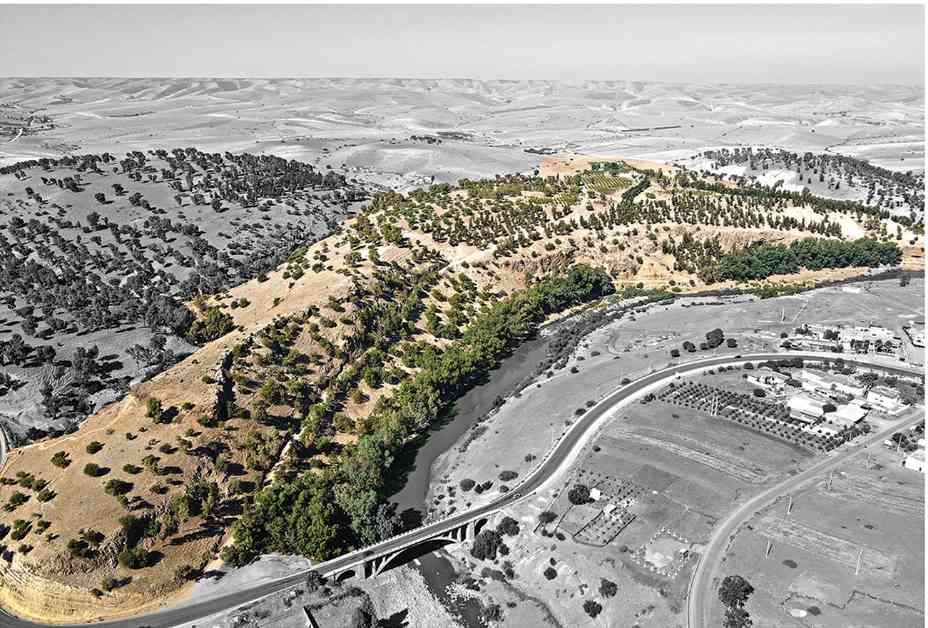Unearthing Ancient Civilizations: Neolithic Society Discovered in Morocco
In a groundbreaking discovery, archaeologists have unearthed a 5,000-year-old agricultural complex along the Baht River in Morocco. The site, known as Oued Beht, has long been known to researchers due to its initial discovery during building projects in the 1930s. However, it is only recently that an international team of experts has delved deeper into the mysteries of this ancient civilization.
The team uncovered a treasure trove of artifacts at Oued Beht, including remains of domesticated plants and animals, pottery, stone tools, and deep storage pits. These findings shed light on the advanced agricultural practices and societal structures of the Neolithic people who once inhabited this region.
Broader Connections and Insights
Interestingly, similar Neolithic pits containing ivory and ostrich eggs have been found in the Iberian Peninsula, suggesting a connection between the Iberians and the ancient inhabitants of Morocco. Cyprian Broodbank, a researcher from the University of Cambridge, highlighted the significance of these discoveries in understanding the emergence and interactions of early Mediterranean societies.
The study of Oued Beht promises to provide valuable insights into how the people of northwestern Africa contributed to the development of ancient civilizations around the Mediterranean. By piecing together the puzzle of the past, archaeologists hope to unravel the complexities of Neolithic societies and their interconnectedness across vast geographical regions.
Exploring the Depths of History
The excavation at Oued Beht represents a journey into the depths of history, where each artifact uncovered tells a story of human ingenuity and resilience. From the meticulously crafted stone tools to the intricate pottery designs, every object serves as a window into the daily lives of the Neolithic people who called this region home.
As archaeologists continue to sift through the layers of sediment at Oued Beht, they are piecing together a mosaic of ancient civilization that has long been buried beneath the sands of time. The meticulous work of these researchers is not just about uncovering relics of the past but also about preserving and interpreting the rich cultural heritage of Morocco and its people.
Subheadings:
Unveiling the Agricultural Complex
Connecting Neolithic Societies
Preserving Cultural Heritage
Unveiling the Agricultural Complex
The discovery of the agricultural complex at Oued Beht provides a glimpse into the sophisticated farming practices of the Neolithic people in Morocco. From cultivating domesticated plants to raising animals for sustenance, the inhabitants of this region displayed a deep understanding of agriculture that allowed them to thrive in a challenging environment.
The presence of deep storage pits at the site indicates a well-developed system for preserving food supplies, essential for sustaining a growing population. These storage facilities not only served practical purposes but also represented the economic and social organization of the ancient society, reflecting a level of complexity that is impressive for its time.
Connecting Neolithic Societies
The findings at Oued Beht also shed light on the interconnectedness of Neolithic societies across different regions. The discovery of similar artifacts in the Iberian Peninsula suggests a network of trade and cultural exchange between Africa and Europe during the Neolithic period. This exchange of goods and ideas played a crucial role in shaping the development of early Mediterranean civilizations.
By tracing these connections, researchers are uncovering a web of relationships that spanned vast distances and transcended cultural boundaries. The exchange of materials such as ivory and ostrich eggs not only highlights the sophistication of ancient trade networks but also reveals the shared cultural heritage of diverse societies in the ancient world.
Preserving Cultural Heritage
The excavation at Oued Beht is not just about unearthing artifacts but also about preserving the cultural heritage of Morocco for future generations. Each discovery made at the site contributes to a better understanding of the country’s rich history and the contributions of its ancient inhabitants to the tapestry of human civilization.
As archaeologists meticulously document and analyze the artifacts found at Oued Beht, they are creating a legacy of knowledge that will benefit scholars, historians, and the general public for years to come. By preserving and interpreting these ancient treasures, we are ensuring that the stories of the past are not lost to the sands of time.
In Conclusion
The discovery of the Neolithic society at Oued Beht in Morocco represents a significant milestone in our understanding of ancient civilizations. Through the careful excavation and analysis of artifacts, archaeologists are piecing together the puzzle of the past and unraveling the complexities of Neolithic societies in northwestern Africa.
By connecting the dots between different regions and cultures, researchers are painting a vivid picture of the interconnectedness of early Mediterranean societies and the contributions of the people of Morocco to this shared heritage. The ongoing work at Oued Beht serves as a testament to the enduring legacy of ancient civilizations and the importance of preserving our cultural heritage for future generations.
